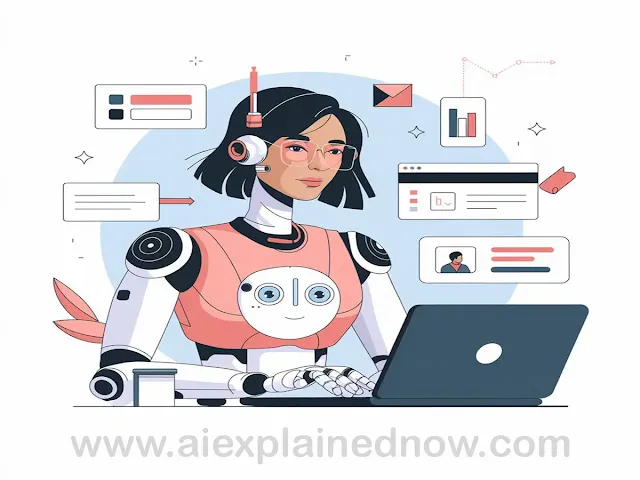Building Custom AI Models Without Coding: A Simple Tutorial
The rise of artificial intelligence (AI) has transformed industries across the globe. However, many individuals and businesses hesitate to adopt AI solutions because they believe creating an AI model requires extensive coding knowledge. Fortunately, this is no longer the case. Today, some intuitive tools and platforms allow even those without a programming background to build custom AI models. This tutorial provides a beginner-friendly guide to creating your own AI models without coding, empowering you to harness the potential of AI for your projects.
How to Build Custom AI Models Without Writing a Single Line of Code: A Beginner's Guide
Understanding No-Code AI Platforms
No-code AI platforms are tools designed to simplify the process of building, training, and deploying AI models. They eliminate the need for writing complex code by providing a user-friendly interface where users can interact with the platform through drag-and-drop features, pre-built templates, and step-by-step wizards.
These platforms cater to various use cases, such as:- Predictive analytics
- Image and speech recognition
- Natural language processing
- Chatbot development
Why Build Custom AI Models Without Coding?
- Accessibility: No-code platforms lower the entry barrier for individuals without technical expertise.
- Cost-Effectiveness: Avoid hiring expensive developers or data scientists for basic AI projects.
- Speed: Rapidly prototype and deploy models without spending months on development.
- Scalability: Many platforms allow you to refine and scale your AI solutions as your needs grow.
Step-by-Step Guide to Building AI Models Without Coding
Step 1: Define Your GoalBefore jumping into any platform, clarify your objective. Are you trying to analyze customer feedback, predict sales trends, or create a visual recognition model? Defining the goal will help you choose the right platform and dataset.
For instance:- If you want to analyze text, tools like MonkeyLearn or OpenAI's no-code integrations may be ideal.
- For image recognition, platforms like Google Teachable Machine or Lobe can be effective.
AI models rely on data to learn and make predictions. You’ll need a dataset relevant to your project.
- Text Data: For natural language processing tasks, collect data in formats like CSV or Excel, containing rows of text or phrases.
- Image Data: For image recognition tasks, gather clear and labeled images in appropriate categories.
- Tabular Data: For predictions or analytics, ensure you have clean, structured data with relevant features.
Step 3: Choose a No-Code AI Platform
Pick a platform that suits your needs. Here are some examples:
- Google AutoML: Perfect for creating high-quality models for vision, language, and structured data.
- Lobe: Specializes in creating image classification models with an intuitive drag-and-drop interface.
- Teachable Machine: Great for quick and simple image, sound, or pose recognition tasks.
- BigML: Focused on predictive modeling and provides features like clustering, anomaly detection, and more.
Once you’ve chosen a platform, upload your dataset. Most tools allow you to drag and drop files or connect directly to data storage systems like Google Drive or AWS.
During this step:
- Ensure data cleanliness to avoid errors during training.
- Label your data correctly if your project involves classification tasks.
- Split your data into training and testing sets if the platform doesn’t automate this step.
After uploading your data, the platform will guide you through the model training process. You’ll typically:
- Choose a pre-built algorithm (e.g., regression, classification, or clustering).
- Configure training parameters (most platforms provide defaults suitable for beginners).
- Start the training process and monitor its progress.
Step 6: Test and Validate Your Model
Once the training is complete, test your model using the reserved testing data. Evaluate its performance based on accuracy, precision, recall, or other relevant metrics.
Most platforms will display these metrics in an easy-to-understand format. If the performance isn’t satisfactory, consider refining your dataset or tweaking parameters.
The final step is to deploy your model. Many platforms offer APIs or direct integrations with apps and services.
- Export your model for use in web applications, mobile apps, or IoT devices.
- Share your results or predictions through reports or dashboards.
Best Practices for Building No-Code AI Models
- Start Small: Begin with simple projects to familiarize yourself with the platform’s interface and capabilities.
- Use Quality Data: The success of your model depends on the quality and quantity of data you provide.
- Iterate and Improve: Test different configurations and datasets to improve model performance.
- Leverage Community Support: Join user forums or tutorials the platform provides for additional guidance.
Conclusion
Building custom AI models without coding is no longer a distant dream. You can create impactful AI solutions tailored to your needs with the right tools and a clear understanding of your goals. Whether you’re a small business owner, educator, or hobbyist, no-code AI platforms empower you to unlock the potential of artificial intelligence without needing a programming degree.
Start small, experiment boldly, and let your creativity guide your AI journey. The future of AI is accessible to everyone—why not begin today?


